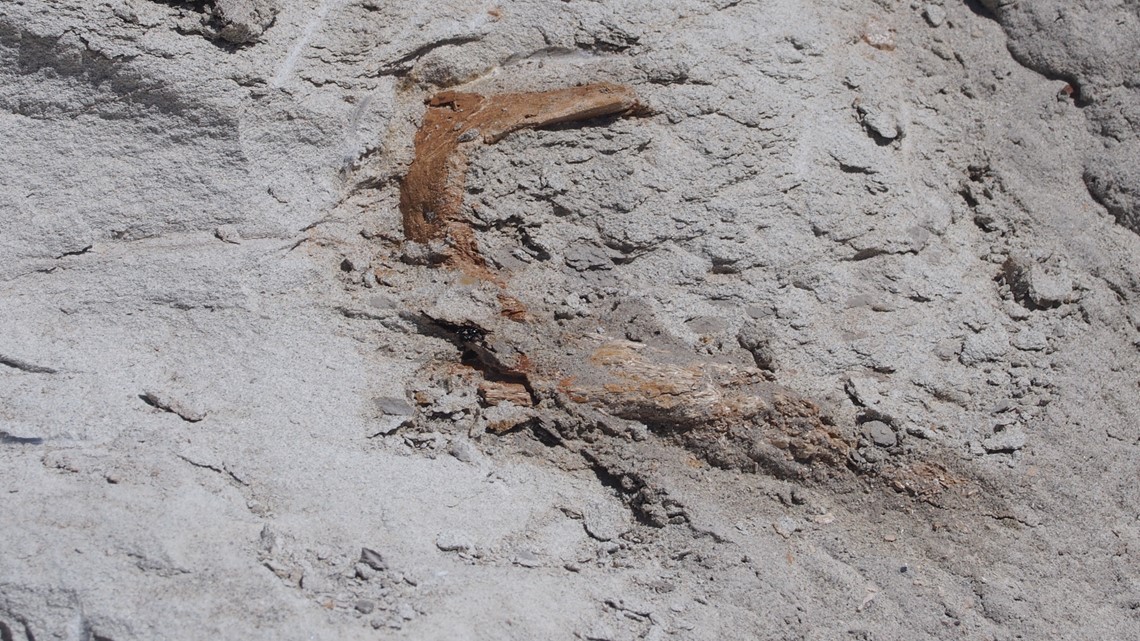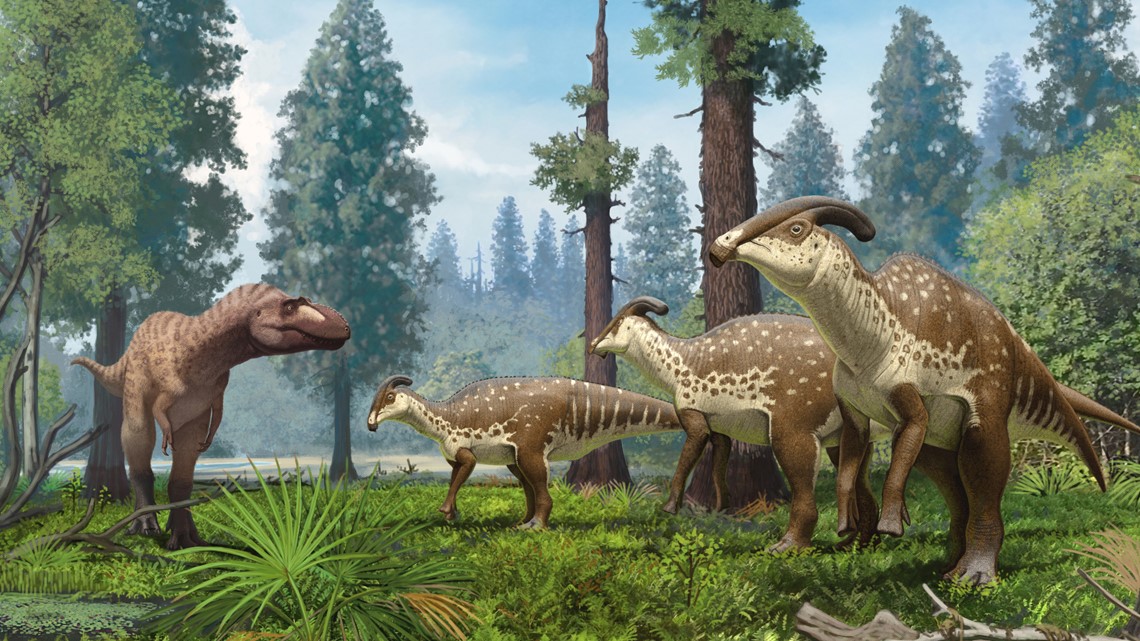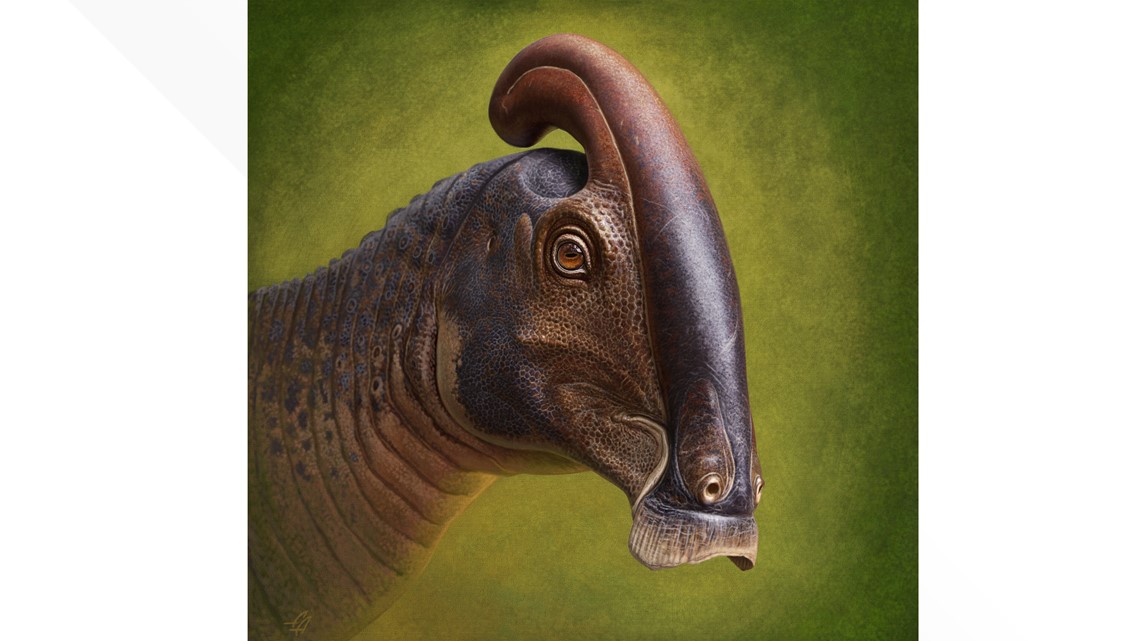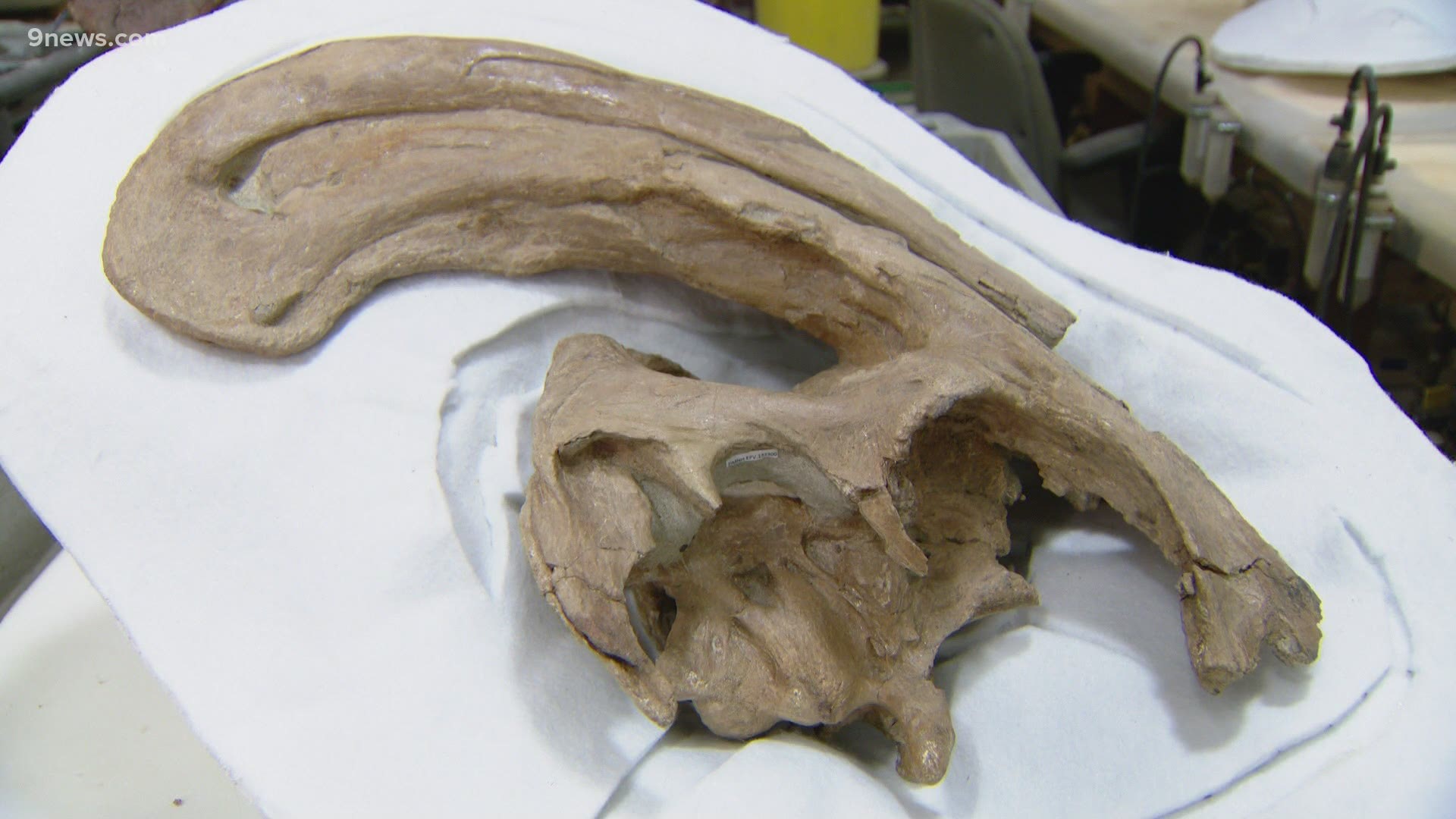DENVER — For the first time in nearly 100 years, a dinosaur skull belonging to the tube-crested dinosaur Parasaurolophus was discovered with help from a team of researchers from the Denver Museum of Nature and Science (DMNS).
Smithsonian Ecology Fellow Erin Spear, Ph.D. uncovered the rare specimen while exploring the badlands of northwestern New Mexico as part of a DMNS team in 2017 but the finding was just announced Monday in the journal PeerJ.
Located deep in the Bisti/De-Na-Zin Wilderness of New Mexico, only a tiny portion of the skull was visible on a steep sandstone slope. Museum volunteers led by Joe Sertich, the curator of dinosaurs at DMNS, were surprised to find the intact crest as they carefully chiseled the specimen from the sandstone.
> Above video: Fossils found in Colorado detail first years after dinosaur extinction.
“The preservation of this new skull is spectacular, finally revealing in detail the bones that make up the crest of this amazing dinosaur known by nearly every dinosaur-obsessed kid,” said Sertich. “This just reinforces the importance of protecting our public lands for scientific discoveries.”


Bone fragments at the site indicated that much of the skeleton may have once been preserved on an ancient sand bar, but only the partial skull, part of the lower jaw, and a handful of ribs survived erosion, according to DMNS.


The exquisite preservation of the skull, especially the bizarre tube-shaped nasal passage, finally revealed the structure of the crest after decades of disagreement.
“Over the past 100 years, ideas for the purpose of the exaggerated tube crest have ranged from snorkels to super sniffers,” noted David Evans, the Temerty Chair in Vertebrate Palaeontology and Vice President of Natural History at the Royal Ontario Museum.
“But after decades of study, we now think these crests functioned primarily as sound resonators and visual displays used to communicate within their own species.”
Despite its extreme morphology, details of the specimen show that the crest is formed much like the crests of other, related duckbilled dinosaurs.
“This specimen is a wonderful example of amazing creatures evolving from a single ancestor," said Sertich.
Among the most recognizable dinosaurs, the duckbilled Parasaurolophus sported an elongate, tube-like crest on its head containing an internal network of airways.
“Imagine your nose growing up your face, three feet behind your head, then turning around to attach above your eyes. Parasaurolophus breathed through eight feet of pipe before oxygen ever reached its head,” said Terry Gates, a paleontologist from North Carolina State University.
Three species of Parasaurolophus are currently recognized, ranging from Alberta to New Mexico in rocks dating between 77 and 73.5 million years old.
The new skull belongs to Parasaurolophus cyrtocristatus, previously known from a single specimen collected in the same region of New Mexico in 1923 by legendary fossil hunter Charles H. Sternberg. Both specimens display a shorter, more curved crest than other species, a feature that may be related to their immaturity at death.


Today, the badlands of northwestern New Mexico where the skull was found are dry and sparsely vegetated, a dramatic contrast to the lush lowland floodplains preserved in their rocks. 75 million years ago, when Parasaurolophus lived in the region, North America was divided into two landmasses by a broad seaway.
Parasaurolophus shared lush, subtropical floodplains with other, crestless duckbilled dinosaurs, a diverse array of horned dinosaurs, and early tyrannosaurs alongside many emerging, modern groups of alligators, turtles and plants.


“The preservation of this new skull is spectacular, finally revealing in detail the bones that make up the crest of this amazing dinosaur known by nearly every dinosaur-obsessed kid,” said Sertich. “This just reinforces the importance of protecting our public lands for scientific discoveries.”
For decades, the family tree of Parasaurolophus placed the two long, straight-crested species of Parasaurolophus (P. walkeri from Alberta and P. tubicen from younger rocks in New Mexico) as most closely related despite being separated by more than 1,000 miles (1,600 km) and 2.5 million years.
Analysis of additional features of the skull excluding the crest, together with information from other Parasaurolophus discoveries from southern Utah, suggest for the first time that all of the southern species from New Mexico and Utah may be more closely related than they are to their northern cousin. This fits patterns observed in other dinosaur groups of the same age, including horned dinosaurs.
SUGGESTED VIDEOS: Animals and Wildlife

